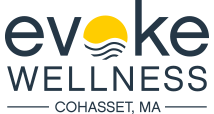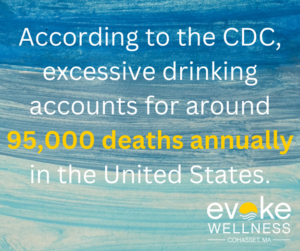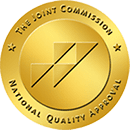Ever wondered about the real differences between beer and liquor? You’re not alone. As you navigate the world of adult beverages, understanding these two popular categories can enhance your drinking experience and help you make informed choices. In this article, we’ll explore:
- The brewing and distilling processes
- Alcohol content and its effects
- Flavor profiles and food pairings
- Health considerations
Recent statistics show that alcohol abuse remains a serious concern, with 14.5 million Americans struggling with alcohol use disorder in 2019. By educating yourself about beer and liquor, you’ll be better equipped to enjoy responsibly and recognize potential risks. Let’s dive into the fascinating world of these time-honored libations.
Call us at (617) 917-3485 today or reach out online.
What is the Difference Between Beer and Liquor?
Beer and liquor are both alcoholic beverages, but there are several key differences between the two.
1. Alcohol Content
Beer typically contains between 4-6% alcohol by volume (ABV), while liquors like vodka, rum, and whiskey have a much higher alcohol content ranging from 35-60% ABV.
2. Production Process
Beer is produced by fermenting malted grains like barley with yeast and water. Liquor, on the other hand, is distilled from fermented grains, fruits, or vegetables.
3. Serving Size
A standard serving of beer is 12 ounces, while a serving of liquor is just 1.5 ounces (a shot). Despite the smaller serving size, liquor contains far more alcohol per volume.
4. Calories & Nutrition
Beer contains carbohydrates from the grains used in brewing, whereas liquors are generally carb-free. However, the calories in liquor come entirely from alcohol.
While moderate consumption of beer or liquor may be acceptable for most adults, it’s crucial to be aware of the risks of alcohol abuse. According to the CDC, excessive drinking accounts for around 95,000 deaths annually in the United States.
Beer vs. Liquor: Which Impacts Your Health More?
Alcohol Concentration Matters
Beer and hard liquor both contain ethanol (alcohol), but the concentration differs. Hard liquor like whiskey and vodka have a higher concentration of alcohol compared to beer. Drinking the same amount results in higher blood alcohol levels for liquor drinkers.
Increased Health Risks
Higher alcohol levels are more toxic, potentially damaging organs like the liver more severely with long-term use. Binge drinking liquor also increases risks of alcohol poisoning. However, beer drinkers may consume more total alcohol over time due to its lower concentration, also negatively impacting health.
Moderation is Key
Regular heavy consumption of any alcoholic beverage can lead to liver disease, heart issues, and other negative effects. While liquor may pack a bigger punch per drink, neither beer nor liquor is “healthier” when consumed in excess. Moderation remains crucial for responsible drinking.
The Dangers and Effects of Binge Drinking Beer vs Liquor
Alcohol Content
While beer typically contains around 4-7% alcohol by volume, liquors like vodka, rum, and whiskey pack a much bigger punch at 40% or more. This means you can consume far more alcohol by binge drinking liquor compared to beer.
Rate of Intoxication
Liquor enters your bloodstream faster than beer, causing rapid intoxication. The effects of binge drinking beer build up gradually, potentially leading you to underestimate your level of drunkenness.
Health Risks
Binge drinking beer puts strain on your liver and increases your risk of alcohol-related diseases like cirrhosis. However, the higher alcohol content in liquor means binge drinking can damage your liver, heart, and brain more severely.
Hangover Severity
The congeners (toxic byproducts) in darker liquors like bourbon tend to cause worse hangovers than lighter liquors or beer. But binge drinking any alcohol can lead to debilitating hangovers marked by headaches, nausea, and dehydration.
While beer and liquor both pose dangers when consumed excessively, binge drinking liquor is generally more hazardous due to its higher alcohol concentrations and quicker intoxication effects. Moderation is key for responsible alcohol consumption.
Tips for Drinking Responsibly and Moderation
Set Reasonable Limits
It’s crucial to know your personal limits and stick to them. Casual drinkers typically feel the effects after 2-3 drinks, while alcoholics build up a high tolerance. Be honest with yourself about how much you can handle before feeling impaired.
Pace Yourself
Drink slowly and space out your drinks over time. Avoid playing catch-up if you feel behind. Alternate alcoholic beverages with water to stay hydrated.
Eat Before/While Drinking
Having food in your system helps slow the absorption of alcohol into your bloodstream. Opt for protein-rich snacks or meals.
Plan Ahead
Know your transportation options to avoid drinking and driving, and have alternate plans like a designated driver or ride service. Making excuses to drink is a warning sign.
Drink in Moderation
Casual drinking should be occasional and social. Alcoholics often drink alone or in secret. Avoid binge drinking and take occasional breaks.
Beer vs Liquor: Which is More Addictive?
Alcohol Content
- Beer typically contains 4-7% alcohol by volume (ABV). Liquor can range from 40-60% ABV.
- Higher alcohol content increases addiction risk due to faster intoxication and stronger euphoric effects.
Drinking Patterns
- Beer is often consumed casually over longer periods, promoting gradual tolerance buildup.
- Liquor tends to be consumed quickly in binge sessions, rapidly spiking blood alcohol levels.
Studies & Stats
- According to the National Institute on Alcohol Abuse and Alcoholism, around 15 million adults in the U.S. have Alcohol Use Disorder.
- Recent research suggests liquor drinkers are more prone to alcohol dependence compared to beer drinkers.
While beer and liquor both carry addiction risks, liquor’s higher alcohol concentration and typical consumption patterns may increase the likelihood of developing alcohol use disorder over time. Moderation is key for responsible drinking.
Getting Help for Alcohol Abuse and Addiction
Seek Professional Treatment
Seeking professional treatment at a rehab facility is one of the best ways to get help for alcohol or drug addiction. Modern evidence-based programs address underlying mental health issues and provide comprehensive care. Evoke Wellness offers diverse options like detox, residential, outpatient services, dual diagnosis treatment and medication-assisted treatment.
Integrated Care Approach
Successful recovery requires an integrated approach to simultaneously treat substance abuse and any co-occurring mental health disorders like anxiety. This involves assessment, individualized plans, integrated therapy methods like CBT/DBT, medication if needed, psychotherapy, support groups and family involvement.
Continuing Care & Relapse Prevention
Aftercare support is crucial after primary treatment to prevent relapse and ease transition back into daily life. Long-term rehabilitation programs lasting 90+ days are most effective, as recovery is an ongoing process that may require multiple attempts combined with continuing care services.
Holistic Healing Methods
In addition to clinical treatment, holistic therapies like art, music, meditation, yoga and massage can provide healthy alternatives to substance use. These mind-body practices support lifestyle changes and coping skills development for sustained sobriety.
Dual Diagnosis Programs
For those struggling with co-occurring addiction and mental illness, dual diagnosis programs utilizing evidence-based therapies and psychiatric medication management are available. This integrated treatment tackles both issues concurrently for improved emotional well-being and long-term recovery.
Conclusion
As you’ve learned, beer and liquor each have unique characteristics that set them apart. Whether you prefer a cold brew or a crafted cocktail, understanding these differences allows you to make informed choices about your alcohol consumption.
Remember:
- Moderation is key
- Know your limits
- Never drink and drive
Recent statistics show alcohol abuse remains a serious issue:
- 14.5 million Americans have an alcohol use disorder
- 95,000 people die annually from alcohol-related causes
- Excessive drinking costs the U.S. $249 billion yearly
By drinking responsibly and being aware of how beer and liquor affect your body differently, you can enjoy alcohol safely while avoiding potential dangers. Cheers to making smart decisions about your drinking habits!
Begin Your Journey with Evoke Wellness at Cohasset
If you or a loved one is considering treatment, Evoke Wellness at Cohasset invites you to contact us. Our compassionate team is ready to answer your questions, discuss your needs, and help you take the first steps toward recovery. In Cohasset, you’ll find more than just a treatment program – you’ll discover a community dedicated to your wellness and success. Together, let’s embrace the journey to recovery and the promise of a new beginning. Call us at (617) 917-3485 today or reach out online.





